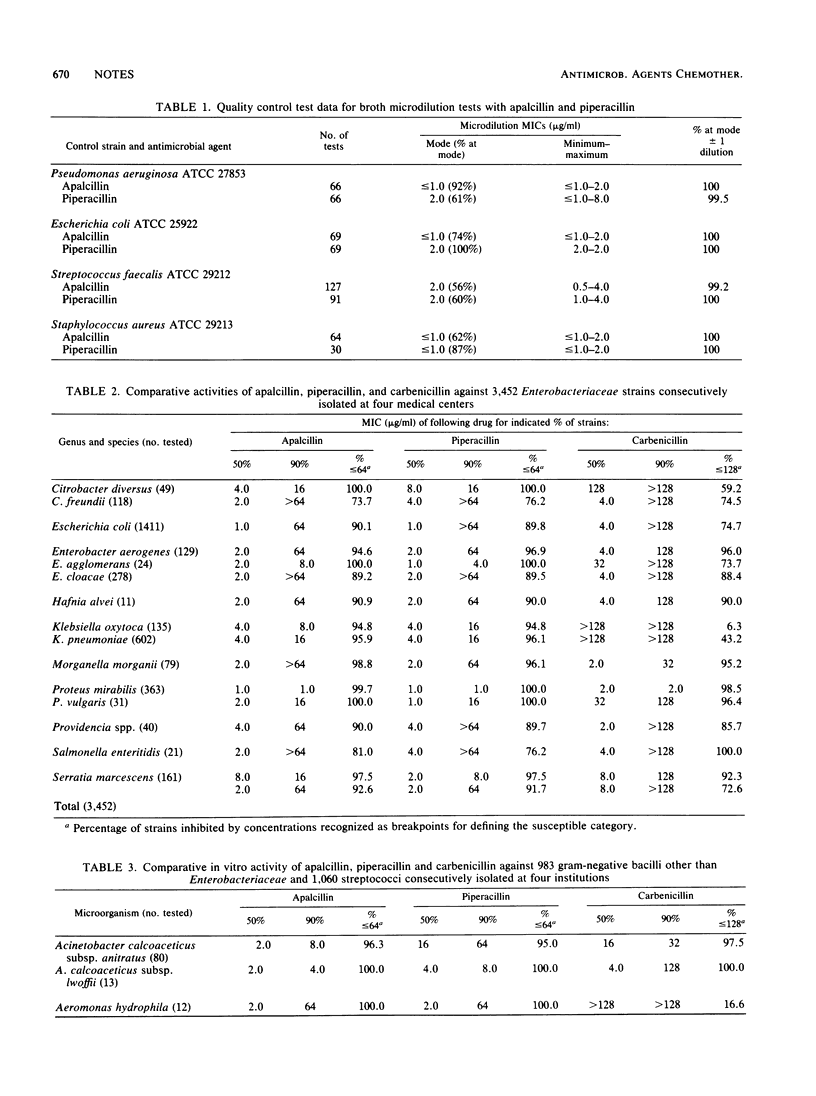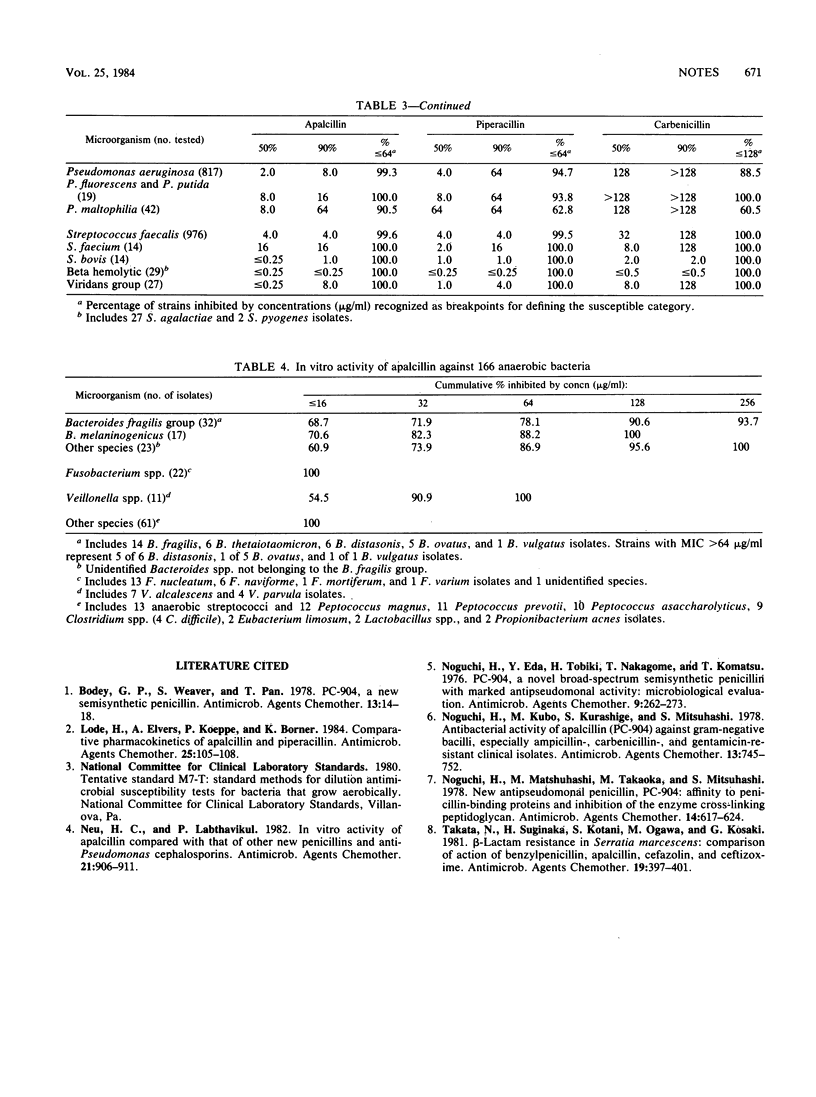Abstract
Quantitative susceptibility tests were performed in four separate medical centers, in which apalcillin was compared with piperacillin and carbenicillin. Data from tests of 6,797 isolates confirmed that apalcillin and piperacillin had nearly identical spectra of activity but that apalcillin was significantly more active against Pseudomonas aeruginosa (MIC required to inhibit 90% of strains, 2.0 versus 64 micrograms/ml) and Acinetobacter calcoaceticus subsp. anitratus (MIC required to inhibit 90% of strains, 2.0 versus 16 micrograms/ml). Against 166 anaerobic bacterial isolates, apalcillin demonstrated in vitro activity.
Full text
PDF


Selected References
These references are in PubMed. This may not be the complete list of references from this article.
- Bodey G. P., Weaver S., Pan T. PC-904, a new semisynthetic penicillin. Antimicrob Agents Chemother. 1978 Jan;13(1):14–18. doi: 10.1128/aac.13.1.14. [DOI] [PMC free article] [PubMed] [Google Scholar]
- Lode H., Elvers A., Koeppe P., Borner K. Comparative pharmacokinetics of apalcillin and piperacillin. Antimicrob Agents Chemother. 1984 Jan;25(1):105–108. doi: 10.1128/aac.25.1.105. [DOI] [PMC free article] [PubMed] [Google Scholar]
- Neu H. C., Labthavikul P. In vitro activity of apalcillin compared with that of other new penicillins and anti-Pseudomonas cephalosporins. Antimicrob Agents Chemother. 1982 Jun;21(6):906–911. doi: 10.1128/aac.21.6.906. [DOI] [PMC free article] [PubMed] [Google Scholar]
- Noguchi H., Eda Y., Tobiki H., Nakagome T., Komatsu T. PC-904, a novel broad-spectrum semisynthetic penicillin with marked antipseudomonal activity: microbiological evaluation. Antimicrob Agents Chemother. 1976 Feb;9(2):262–273. doi: 10.1128/aac.9.2.262. [DOI] [PMC free article] [PubMed] [Google Scholar]
- Noguchi H., Kubo M., Kurashige S., Mitsuhashi S. Antibacterial activity of apalcillin (PC-904) against gram-negative bacilli, especially ampicillin-, carbenicillin-, and gentamicin-resistant clinical isolates. Antimicrob Agents Chemother. 1978 May;13(5):745–752. doi: 10.1128/aac.13.5.745. [DOI] [PMC free article] [PubMed] [Google Scholar]
- Noguchi H., Matsuhashi M., Takaoka M., Mitsuhashi S. New antipseudomonal penicillin, PC-904: affinity to penicillin-binding proteins and inhibition of the enzyme cross-linking peptidoglycan. Antimicrob Agents Chemother. 1978 Oct;14(4):617–624. doi: 10.1128/aac.14.4.617. [DOI] [PMC free article] [PubMed] [Google Scholar]
- Takata N., Suginaka H., Kotani S., Ogawa M., Kosaki G. beta-Lactam resistance in Serratia marcescens: comparison of action of benzylpenicillin, Apalcillin, Cefazolin, and ceftizoxime. Antimicrob Agents Chemother. 1981 Mar;19(3):397–401. doi: 10.1128/aac.19.3.397. [DOI] [PMC free article] [PubMed] [Google Scholar]


